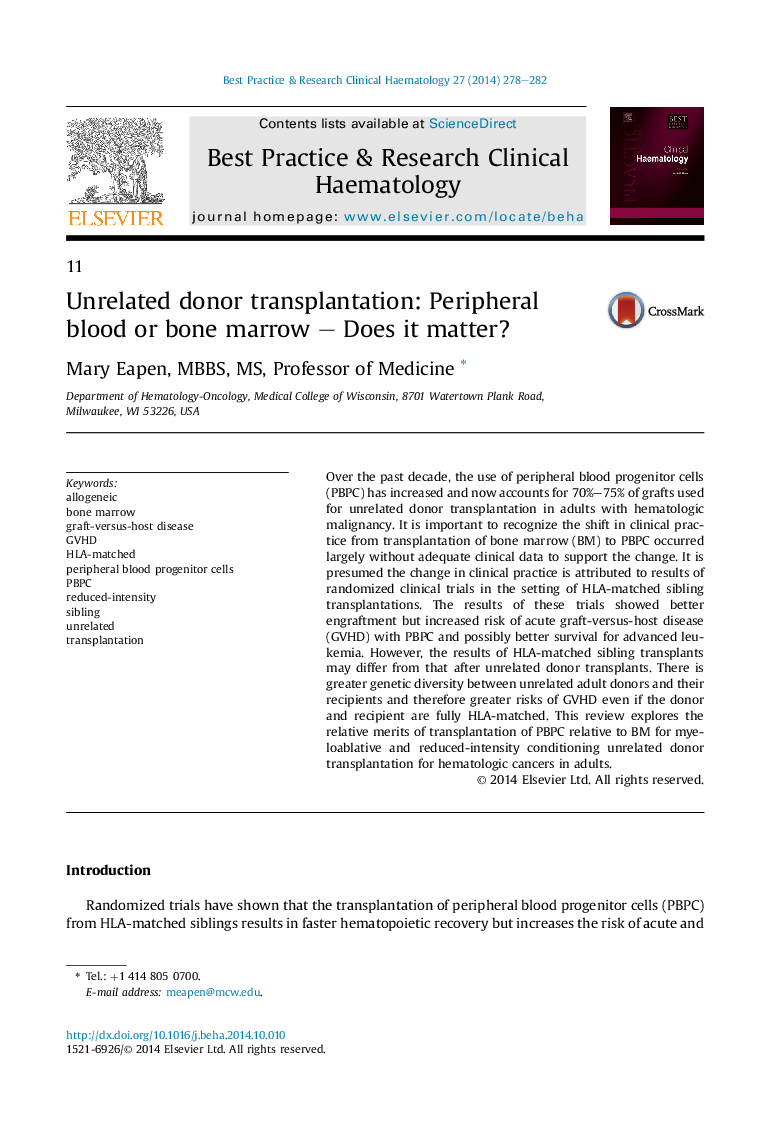| کد مقاله | کد نشریه | سال انتشار | مقاله انگلیسی | نسخه تمام متن |
|---|---|---|---|---|
| 2100148 | 1546174 | 2014 | 5 صفحه PDF | دانلود رایگان |
Over the past decade, the use of peripheral blood progenitor cells (PBPC) has increased and now accounts for 70%–75% of grafts used for unrelated donor transplantation in adults with hematologic malignancy. It is important to recognize the shift in clinical practice from transplantation of bone marrow (BM) to PBPC occurred largely without adequate clinical data to support the change. It is presumed the change in clinical practice is attributed to results of randomized clinical trials in the setting of HLA-matched sibling transplantations. The results of these trials showed better engraftment but increased risk of acute graft-versus-host disease (GVHD) with PBPC and possibly better survival for advanced leukemia. However, the results of HLA-matched sibling transplants may differ from that after unrelated donor transplants. There is greater genetic diversity between unrelated adult donors and their recipients and therefore greater risks of GVHD even if the donor and recipient are fully HLA-matched. This review explores the relative merits of transplantation of PBPC relative to BM for myeloablative and reduced-intensity conditioning unrelated donor transplantation for hematologic cancers in adults.
Journal: Best Practice & Research Clinical Haematology - Volume 27, Issues 3–4, September–December 2014, Pages 278–282
